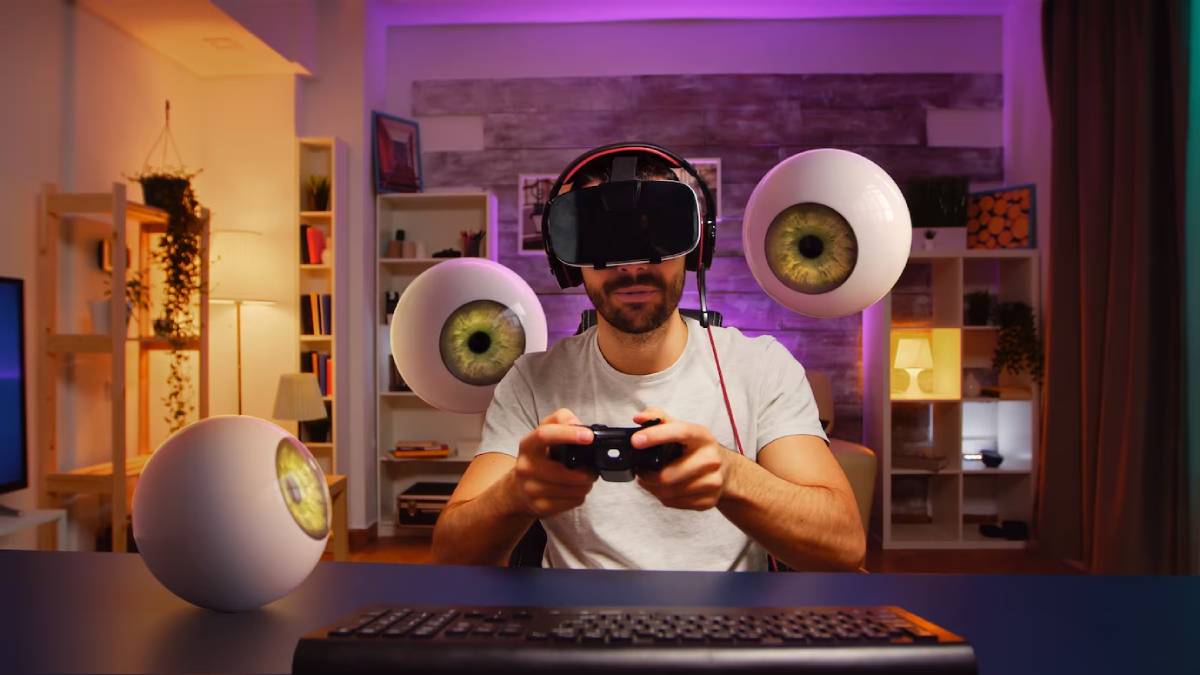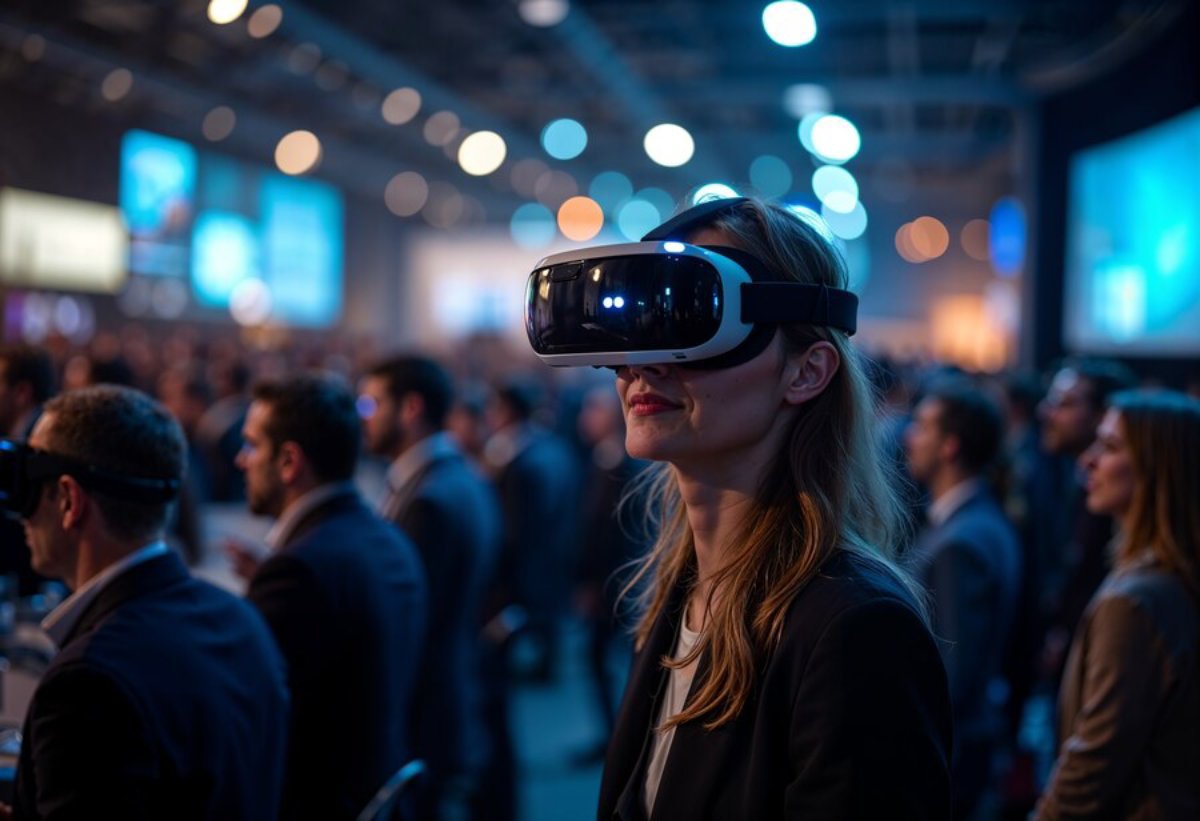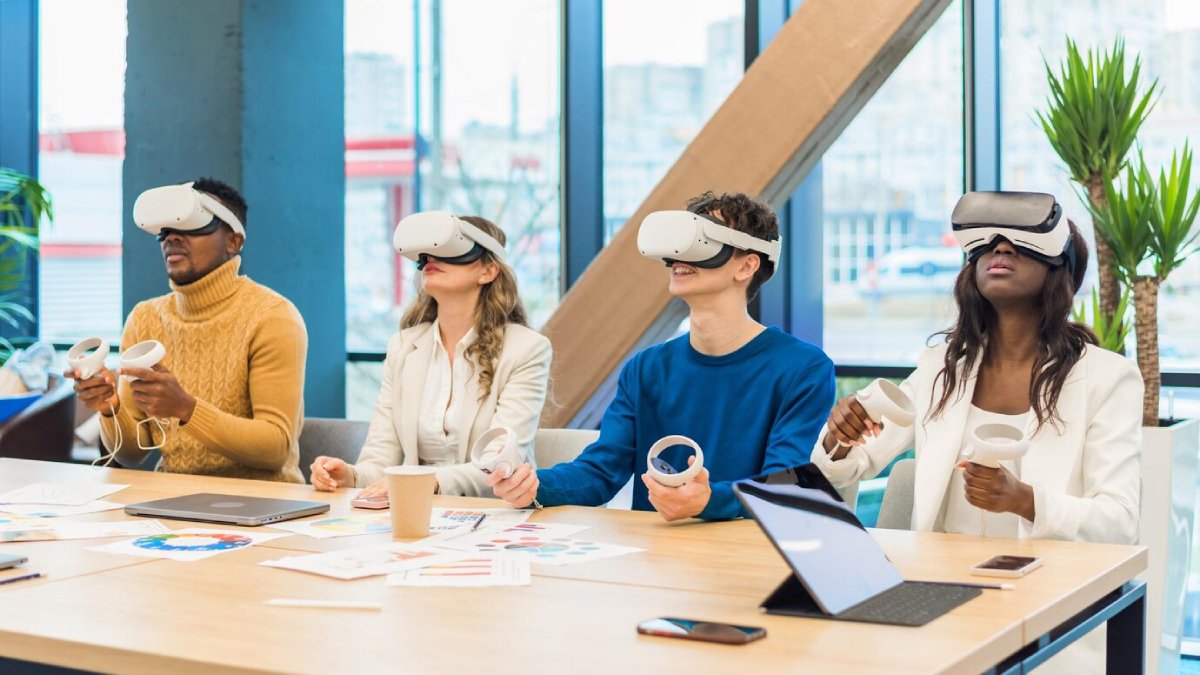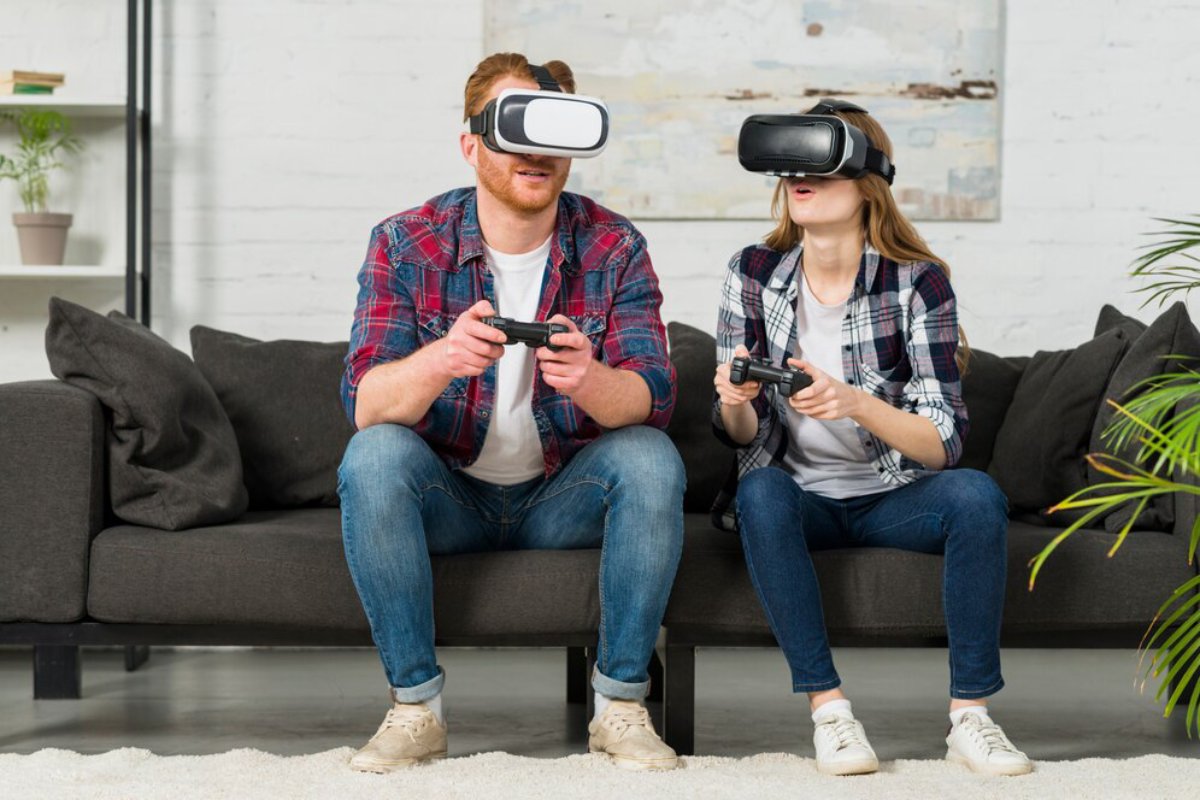
How to Set Up Your First VR Gaming System: A Beginner’s Guide
VR gaming has changed how we enjoy digital entertainment. Setting up your first VR gaming system can be daunting, but given the proper guidance, it can be fun and rewarding.” Get prepared for the exciting world of virtual reality gaming with this guide.
Virtual reality is now an essential part of gaming. This allows players to engage with these worlds like never before. With new technology, VR systems are now more available than ever—a good time to jump into this new entertainment line. Whether you’re a lifelong gamer eager to expand your gaming horizons or a newcomer hunting a hot new thing in gaming tech, setting up a VR system is a significant change in direction.
This guide teaches you how to build your first VR gaming system in expert step-by-step detail. We want to empower you with what you need to start your path into VR. You’ll be able to virtualise worlds, walk-in interactive environments, and take the gaming experience to the next level.
Pro Tip: Optimise Performance: Adjust graphical settings to balance visual quality and smooth gameplay.
Understanding the Core
Before diving into the setup process, it’s essential to understand the core components of a VR gaming system. A typical setup includes a VR headset, motion controllers, and a compatible gaming platform like a PC or console. Each component plays a crucial role in delivering a seamless and immersive experience.
The VR headset is the heart of the system, providing the visual and auditory elements that transport you into virtual environments. Modern headsets have high-resolution displays, built-in audio, and real-time sensors that track your movements. Motion controllers enhance interactivity by allowing you to manipulate objects and navigate within the virtual world.
Choosing the right VR system depends on your preferences and budget. Popular options include the Oculus Quest, PlayStation VR, and HTC Vive. Each offers unique features and capabilities, so it’s essential to research and select the one that best aligns with your gaming goals.
Important Tip: Many VR platforms offer free demos and experiences to explore before purchasing full games. Why wait? Explore free content.
Quick Guide / Checklist
- Research and select a VR system that suits your needs.
- Ensure your gaming platform is compatible with the chosen VR system.
- Designate a dedicated space for VR gaming, free from obstacles.
- Set up the VR headset and motion controllers according to the manufacturer’s instructions.
- Calibrate your VR headset.
- Install necessary software and updates on your gaming platform.
- Familiarise yourself with VR safety guidelines and best practices.
Step-by-Step Guide (How to Practise)
Setting up your first VR gaming system involves several key steps. Follow this detailed guide to ensure a smooth and successful installation:
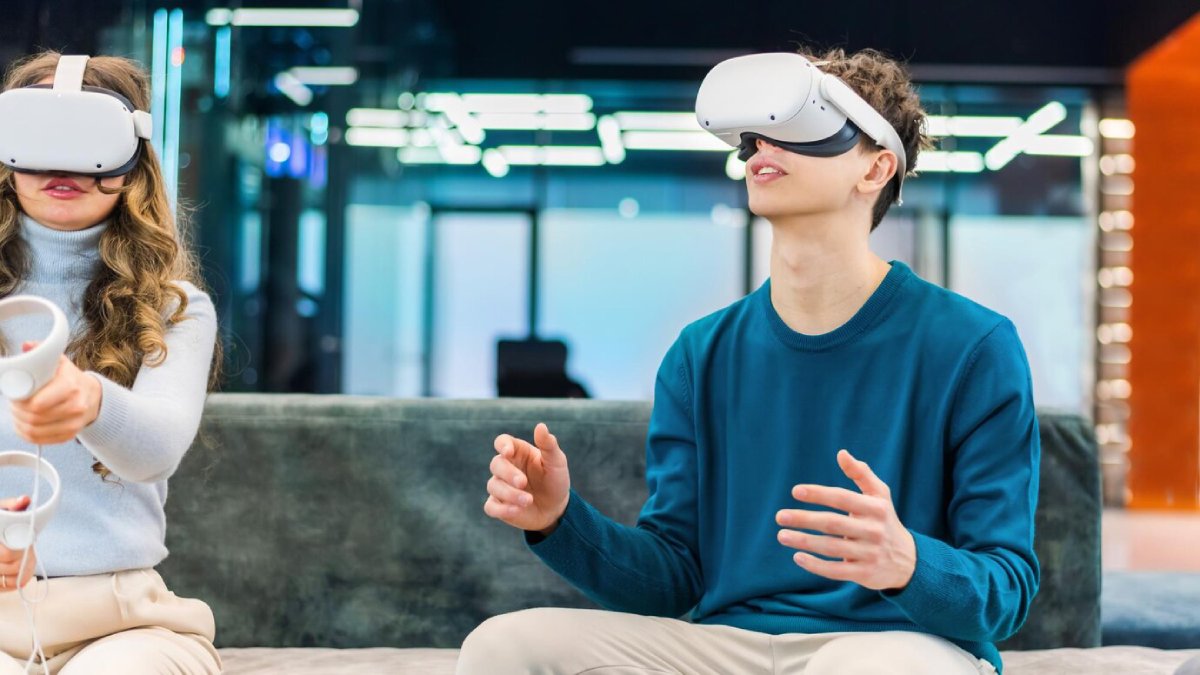
1. Choose Your VR System
Begin by selecting a VR system that meets your preferences and budget. Consider factors such as display quality, tracking accuracy, and available game library.
Popular options include:
- Oculus Quest 2: Known for its wireless convenience and extensive game library.
- PlayStation VR: Ideal for PlayStation console owners, offering a range of exclusive titles.
- HTC Vive: Offers high-quality visuals and precise tracking for a premium experience.
2. Prepare Your Gaming Space
Designate a dedicated area for VR gaming, ensuring it’s free from obstacles and hazards. A clear space is crucial for safe and enjoyable gameplay.
Consider the following tips:
- Clear the Area: Remove furniture, cables, and other potential trip hazards.
- Mark Boundaries: Use tape or rugs to define the play area, helping you stay within safe limits.
- Ensure Adequate Lighting: A well-lit area improves tracking accuracy, while VR headsets can function in low light.
3. Set Up the VR Headset
Follow the manufacturer’s instructions to set up your VR headset.
This typically involves:
- Connecting to Power: Ensure the headset is fully charged or connected to a power source.
- Adjusting Fit: Customise the headband and lenses for a comfortable fit.
- Configuring Sensors: Position external sensors (if applicable) for optimal tracking coverage.
4. Connect Motion Controllers
Motion controllers are essential for interacting with virtual environments.
To set them up:
- Pair with Headset: Use Bluetooth or a wired connection to sync controllers with the headset.
- Calibrate Controls: Follow on-screen prompts to calibrate buttons and triggers.
5. Install Software and Updates
Ensure your gaming platform is equipped with the latest software and updates.
This may involve:
- Downloading VR Software: Install necessary applications and drivers for VR compatibility.
- Updating Firmware: Keep the VR headset and controllers updated for optimal performance.
6. Familiarise Yourself with VR Safety
Prioritise safety by reviewing VR guidelines and best practices.
Consider the following:
- Take Breaks: Regular breaks prevent fatigue and discomfort during extended play sessions.
- Be Mindful of Surroundings: Remain aware of your physical environment to avoid accidents.
- Use Wrist Straps: Secure controllers with wrist straps to prevent accidental drops.
Important Notes
As you embark on your VR gaming journey, keep this in mind:
- Join Online Communities and Engage with other VR enthusiasts to share tips, recommendations, and experiences.
- Common pitfalls include neglecting safety precautions and overlooking software updates. You can avoid these issues and enjoy a seamless VR experience by staying informed and proactive.
Best Practices & Additional Insights
Enhance your VR gaming experience with these best practices:
- Invest in Comfort Accessories: Consider purchasing a VR cover or additional padding for extended comfort.
- Experiment with Settings: Customise audio, display, and control settings to suit your preferences.
- Explore a Variety of Games: Diversify your gaming library with different genres to fully experience VR’s potential.
VR gaming is an evolving field, with new advancements and innovations emerging regularly. Stay informed about the latest developments to maximise your enjoyment and investment.

FAQs
Q: Can I use a VR headset with any PC or console?
A: Not all PCs or consoles are compatible with VR systems. Check the system requirements of your chosen VR headset and ensure your platform meets or exceeds them.
Q: How much space do I need for VR gaming?
A: The required space varies depending on the VR system. Generally, a clear area of at least 2m x 2m is recommended for room-scale experiences.
Q: Are there health risks associated with VR gaming?
A: While VR gaming is generally safe, prolonged use can cause eye strain and motion sickness. To minimise risks, take regular breaks and follow safety guidelines.
Embark on Your VR Journey with Confidence
So, you’ve set up your first VR gaming system. It’s a new realm of immersive and interactive experiences. With this guide, you will be ready to set up your system and step confidently into your VR journey. S, happy gaming in the great new world of virtual reality gaming, but remember to use common sense and have fun.
So, are you ready to jump into the VR gaming world? Share your experience, join the online communities, and try all available games and experiences. So what are you waiting for? Step into the future of gaming now!
